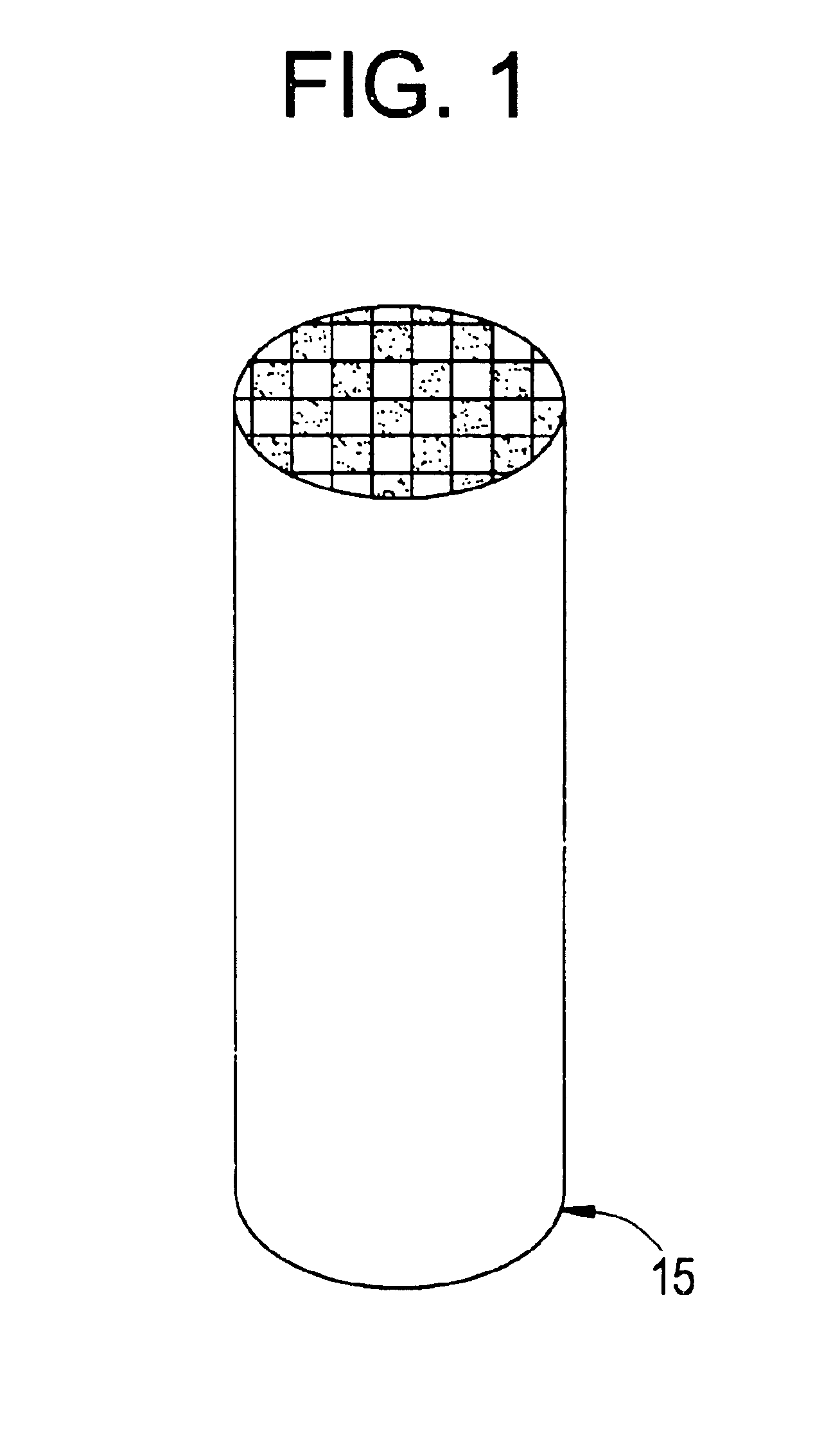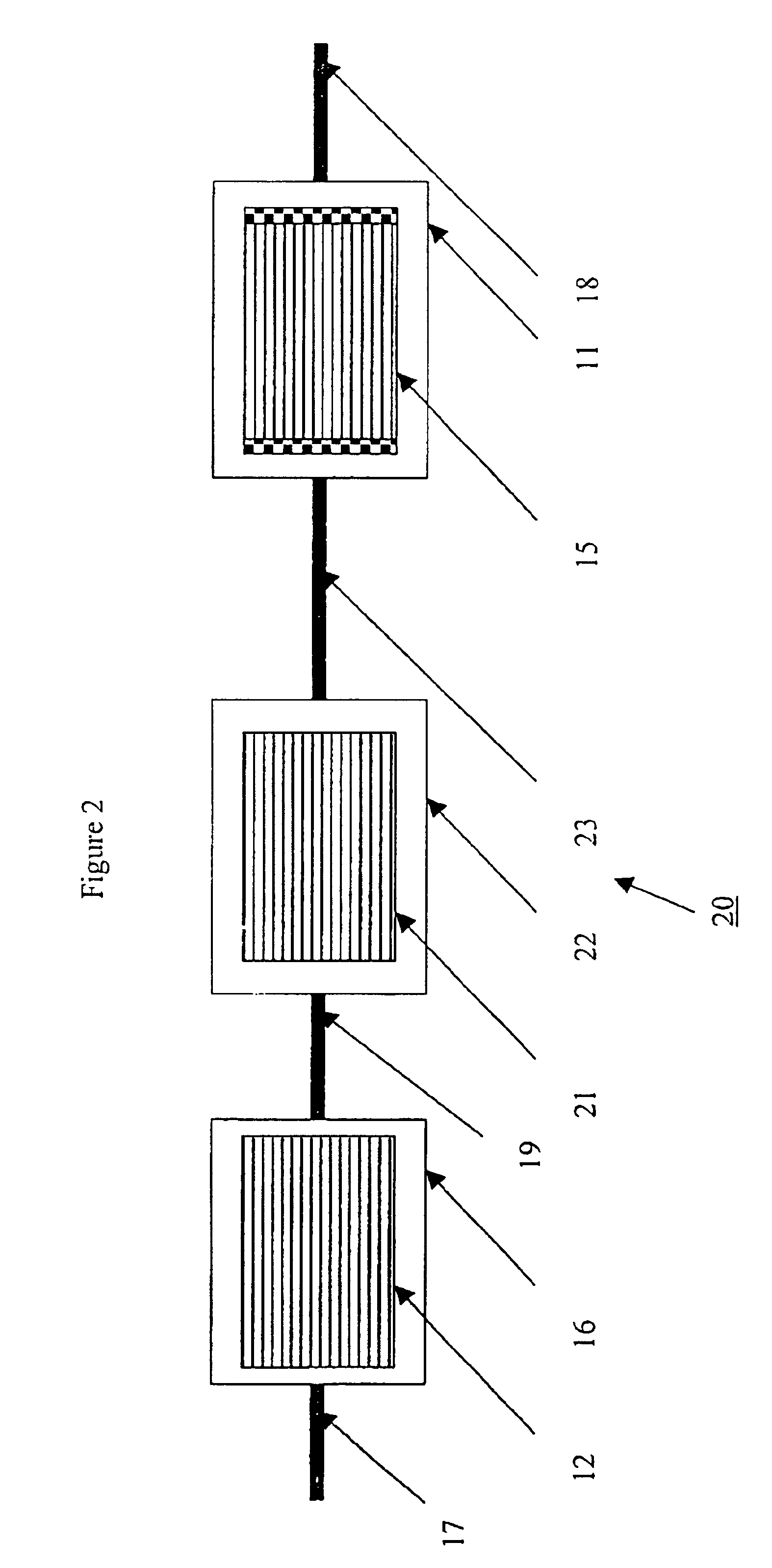Diesel engine system comprising a soot filter and low temperature NOx trap
a diesel engine and filter technology, applied in the direction of arsenic compounds, physical/chemical process catalysts, separation processes, etc., can solve the problems of increasing the back pressure in the exhaust system, reducing the efficiency of the exhaust system, and reducing the amount of particulate matter
- Summary
- Abstract
- Description
- Claims
- Application Information
AI Technical Summary
Benefits of technology
Problems solved by technology
Method used
Image
Examples
example 1
Preparation of the Trap
[0070]The low temperature NO2 trap materials were prepared using the following general procedure: A metal salt solution containing the metal to be exchanged, is prepared in about 300 g of water to give a predetermined amount of the metal on the corresponding zeolites. 100 g of ammonium form zeolite was then added to the metal salt solution and stirred for 2 hours at ambient conditions. After 2 hours a predetermined amount of ammonium hydroxide solution was added to precipitate the excess metal in the solution (pH about 8-9). The exchanged zeolite was then filtered out and washed with about 500 mL of water. The filtrate was then made into a slurry using about 10 g of alumina as a binder.
[0071]The slurry contained about 30-35% solids, and was coated onto 0.5″×1.0″ cordierite ceramic 400 cpsi carriers to achieve a loading of 2 g / in3. The coated carriers were then dried at 100° C. for 2 hours and calcined at 550° C. for 1 hour in dry air. This procedure was used t...
example 2
Testing Conditions for Zeolite Traps
[0073]Testing conditions for the zeolite traps are generally described herein. A honeycomb carrier of 0.5 in diameter with a 1 in length was packed tightly in a quartz reactor where a gas feed with a total flow of about 1-1.5 L / min was introduced, usually at room temperature, to give a GHSV of about 30,000-45,000 hr−1. The gas composition of the feed typically contained 250 ppm NO2, 1000 ppm Cl as toluene or propylene, 20 ppm SO2, 1.5% water, 5% O2 and the balance was N2. The level of water depended upon the procedure used and will be indicated in each example. To obtain 1.5% water, air was bubbled into a 1 L container kept at room temperature to achieve complete saturation (100% humidity). The 10% steam in the feed was obtained using a syringe pump. Detection of the NOx in the outlet gas stream was achieved by chemiluminescence techniques. The disappearance of NO2 was measured relative to the amount of fed NOx (NOxin−NOxout / NOxin*100).
example 3
Storage and Release Properties of a Mn / ETS-10 Trap
[0074]ETS-10 is a titanium silicate type molecular sieve whose preparation is described in U.S. Pat. Nos. 4,853,202 and 5,244,650, herein incorporated by reference. These are large port size molecular sieves. FIG. 7 shows the NO2 storage and release of a 3 wt. % Mn exchanged ETS-10 trap (Mn / ETS-10) material coated on honeycomb carrier in a gas stream containing NO2 with increasing time. The gas feed contained water saturated air (about 1.5% water), 250 ppm NO2, 1000 ppm toluene, 20 ppm SO2, 15% O2 and the balance was N2. The gas feed was introduced into the reactor at about 30° C. The temperature of the gas feed was increased at a rate of 13° C. / min from ambient (about 25° C.) to about 450° C. over a 30 minute time period. In FIG. 7, the left ordinate corresponds to the percentage disappearance of the NOx and the toluene, the right ordinate corresponds to the inlet temperature and the abscissa corresponds to the time in minutes. The ...
PUM
| Property | Measurement | Unit |
|---|---|---|
| Lattice constant | aaaaa | aaaaa |
| Temperature | aaaaa | aaaaa |
Abstract
Description
Claims
Application Information
 Login to View More
Login to View More - R&D
- Intellectual Property
- Life Sciences
- Materials
- Tech Scout
- Unparalleled Data Quality
- Higher Quality Content
- 60% Fewer Hallucinations
Browse by: Latest US Patents, China's latest patents, Technical Efficacy Thesaurus, Application Domain, Technology Topic, Popular Technical Reports.
© 2025 PatSnap. All rights reserved.Legal|Privacy policy|Modern Slavery Act Transparency Statement|Sitemap|About US| Contact US: help@patsnap.com



